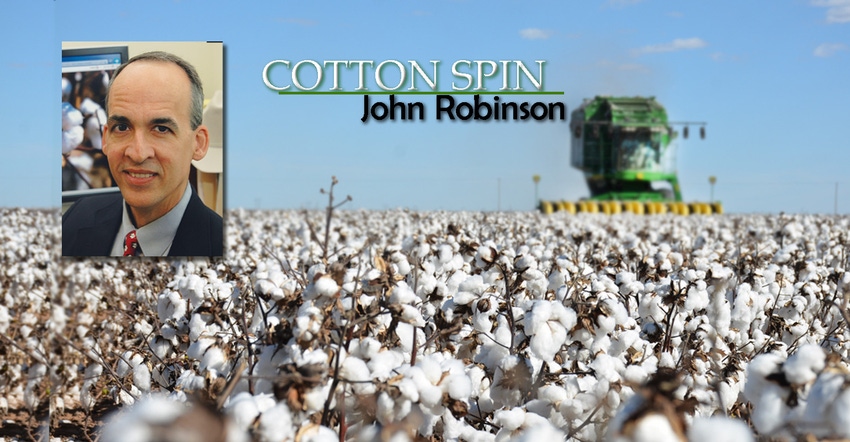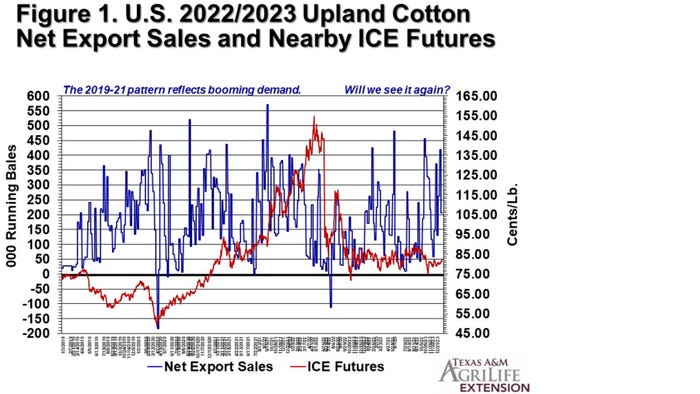
For many months now, the demand for cotton has appeared weak, as measured by buyer inquiries and export sales. This has happened along with, or perhaps because of, lingering fears about slow economic growth.
As it turns out, demand weakness has been balanced out by short U.S. cotton crops in 2022 (drought) and 2023 (drought, too wet, and then too hot). The basic story being told about 2024 is that similarly weak demand and potentially stronger production will increase ending stocks and bring weaker prices by the fall.
It is an open question whether cotton demand will recover, stay the same, or worsen. We should hopefully recognize it when it happens. For example, the left half of Figure 1 shows very strong weekly export sales (the blue peaks and valleys), even in the context of strongly rising prices in 2021 (the red line). This coincided with the disruption and recovery of the global economy during the latter COVID era.

The right-hand side of Figure 1 shows a picture of modest to poor demand. The red price line reflects a flat, sideways pattern at a relatively low level. Meanwhile, most of the export sales were 250,000 per week or less. Many of the strongest weekly export sales during this recent period reflected non-commercial, policy-driven buying by the Chinese government reserve.
So, will cotton demand weaken, stay the same, or improve? I wish I knew for certain. The rationale for weaker or continued slow demand is associated with the possible continued slowing of the world economy. In the U.S., this fear is related to the deliberate policy of the Federal Reserve in fighting inflation by maintaining higher interest rates. In China, recession fears are due to other issues.
But there are always bullish possibilities. The most bullish story I’ve heard involves a mismatch between strong retail clothing sales with retail de-stocking (the latter a reaction to fears of an induced recession by high interest rates). Combined with short cotton supplies in the U.S., eventual cuts in interest rates, and assumed economic growth, this scenario paints a picture of surging demand to make up the gap. There are lots of ifs to play out under this bullish scenario, but if they did, it would show up in Figure 1 as a lot of upward spikes in weekly export sales, as well as, strength in ICE cotton futures. Keep watch.
About the Author(s)
You May Also Like




